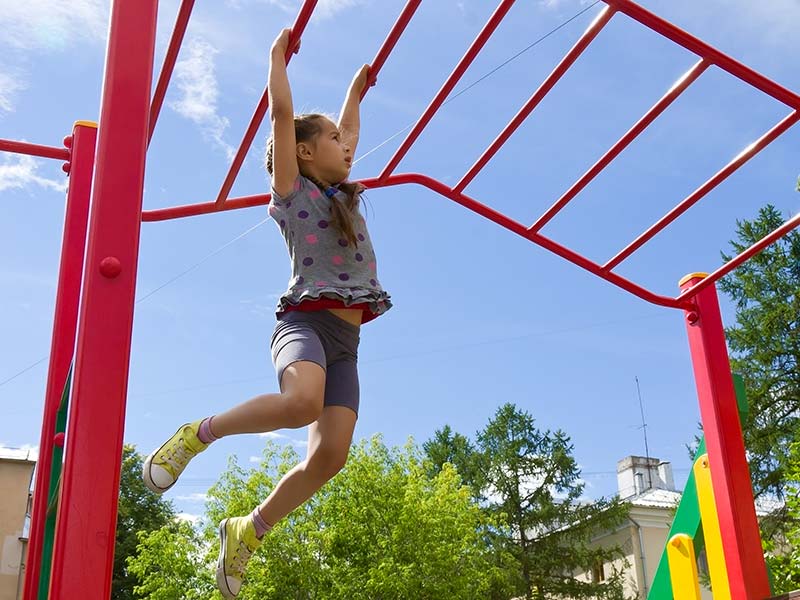




Supporting positive risk-taking is key to the implementation of child-centred planning and approaches, which are aimed at increasing inclusion and promoting children and young people’s participation in their care and service delivery.
Managing the risks is an important role within practice. Being able to discuss potential risks and how best to manage them is an area of discussion with children and young people in order for them to make informed choices.
Children and young people must be given the support they need to take the risks they want and to make informed choices. New experiences and greater community involvement potentially involve children and young people taking risks that offer opportunities for the development of independence, confidence, well-being, voice and autonomy.
Mae helpu pobl i gymryd risgiau cadarnhaol yn allweddol er mwyn dilyn cynlluniau a dulliau gweithredu plant-ganolog, sydd â'r nod o gynyddu cynhwysiant a hyrwyddo cyfranogiad pobl yn eu gofal a'r gwasanaethau a ddarperir iddynt.
Mae rheoli risgiau o fewn arferion yn rôl bwysig. Dylid trafod y risgiau posibl a beth yw’r ffordd orau o ymdrin â nhw gyda’r plant a phobl ifanc er mwyn iddynt wneud dewisiadau hyddysg.
Rhaid rhoi'r cymorth sydd ei angen ar blant a phobl ifanc i gymryd y risgiau ac i wneud dewisiadau hyddysg. Gallai profiadau newydd a chynnydd yng nghyfranogiad y gymuned olygu y bydd plant a phobl ifanc yn cymryd risgiau mewn ffyrdd sy'n cynnig cyfleoedd i feithrin annibyniaeth, hyder, llesiant, llais ac ymreolaeth.

Children and young people should be given the support they need to take the risks they want and to make informed choices. This supports their development and promotes a sense of achievement and self-esteem.
Everyone has the right to take risks and make choices. If a child or young person does not consider the potential risk involved they will be ill-prepared; therefore, being supported to view potential risks and how these can be minimised is an important lesson in being able to understand choices and consequences.
When we look at risks we should do so in relation to children and young individuals' strengths, abilities and support networks. Everyone should have the right to make choices about their lives, so it is important to work out whether a risk is significant, and whether it is likely to happen.
There is a balance of respecting rights and maintaining the safety of each individual. This should be assessed on their merit and decisions made on how an individual can make choices whilst ensuring their safety and well-being.
Health and social care settings must be able to demonstrate that a risk-assessing process, a process of thinking things through properly, involving children and young individuals and others who know them, has taken place. This may or may not result in a formal written risk assessment.
Dylid rhoi'r cymorth sydd ei angen ar blant a phobl ifanc i gymryd y risgiau y maent am eu cymryd ac i wneud dewisiadau ar sail gwybodaeth. Mae hyn yn cefnogi eu datblygiad ac yn hyrwyddo ymdeimlad o gyflawniad a hunan-barch.
Mae gan bawb hawl i gymryd risgiau a gwneud dewisiadau, ond os oes gan unigolion ddealltwriaeth fwy cyfyngedig o'r risgiau sy'n gysylltiedig â gweithgaredd y maent am gymryd rhan ynddo, rhaid eu helpu i wneud penderfyniadau ar sail gwybodaeth.
Pan fyddwn yn ystyried risgiau, dylem wneud hynny mewn perthynas â chryfderau, galluoedd a rhwydweithiau cymorth unigolion. Dylai fod gan bawb hawl i wneud dewisiadau ynglŷn â'u bywydau, felly mae'n bwysig canfod p'un a yw risg yn sylweddol, a ph'un a yw'n debygol o ddigwydd.
Mae cydbwysedd o barchu hawliau a chynnal diogelwch pob unigolyn. Dylai hyn gael ei asesu ar ei werth ac ar benderfyniadau yn cael eu gwneud ar sut y gall unigolyn wneud dewisiadau tra'n sicrhau ei ddiogelwch a'i lesiant.
Rhaid i leoliadau iechyd a gofal cymdeithasol allu dangos bod proses asesu risg, sef proses o bwyso a mesur pethau'n ofalus, gan gynnwys yr unigolion a phobl eraill sy'n eu hadnabod, wedi digwydd. Mae'n bosibl y gall hyn arwain at lunio asesiad risg ysgrifenedig ffurfiol.
Everyone is assumed to have capacity unless proven otherwise (Mental Capacity Act, April 2005). Everyone is able to be involved in decision-making, whether they are deemed to have capacity or not. The capacity to consent depends more on a child or young person’s ability to understand and weigh up the options rather than on their age.
The following are occasions when a risk assessment should be completed:
In addition, there should be a system for regularly reviewing the risk assessments. No risk assessment should be written without a review date, monthly, quarterly, six monthly or annually, depending upon the need. This practice ensures a child or young individual has full control, responsibility and voice over decisions affecting them, utilising good practice in the form of child-centred approaches.
A risk assessment is carried out, then the child or young individual is informed and guided in weighing up the risk with the benefit, or drawbacks, from undertaking the identified activity. Health and social care workers support children and young people to balance their rights, the risks and their responsibilities.
Tybir bod gan bawb alluedd, oni phrofir fel arall (Y Ddeddf Galluedd Meddyliol, mis Ebrill 2005). Mae pawb yn gallu cael eu cynnwys wrth wneud penderfyniadau, ni waeth a dybir bod ganddynt alluedd ai peidio. Mae’r gallu i gydsynio yn dibynnu ar alluedd y plentyn neu’r person ifanc i ddeall a phwyso a mesur ei hopsiynau yn hytrach nac ar ei hoedran.
Dylid cwblhau asesiad risg ar yr achlysuron canlynol:
Hefyd, dylid bod system ar gyfer adolygu'r asesiadau risg yn rheolaidd. Ni ddylid ysgrifennu unrhyw asesiad risg heb gynnwys dyddiad adolygu, boed yn fisol, yn chwarterol, bob chwe mis neu'n flynyddol, yn dibynnu ar yr angen. Mae hyn yn sicrhau bod gan blentyn neu berson ifanc reolaeth, cyfrifoldeb a llais llawn dros benderfyniadau sy'n effeithio arno, gan ddilyn arfer da ar ffurf dulliau gweithredu sy'n canolbwyntio ar yr unigolyn.
Cynhelir asesiad risg, wedyn caiff y plentyn neu’r person ifanc ei hysbysu a'i arwain wrth bwyso a mesur y risg a'r manteision, neu'r anfanteision, sy'n gysylltiedig â chyflawni'r gweithgaredd dan sylw. Mae gweithwyr iechyd a gofal cymdeithasol yn helpu unigolion i gydbwyso eu hawliau, y risgiau a'u cyfrifoldebau.

These days everyone is encouraged to travel, take part in leisure and sporting activities, go to college, develop careers and have families. These are all activities that do not just happen by chance – children and young people have to take risks to achieve their goals. The lives of children and young people accessing health and social care services are no different.
For many children and young people, taking risks is a part of everyday life. However, children and young people with a disability or mental health illness, for example, are not always encouraged to take risks. This might be because of their perceived limitations or fear that they or others might be harmed. The same applies for vulnerable children and young people. There are concerns that they do not know about or understand the dangers involved and should not be encouraged to take risks.
Changes in society’s attitude towards disability, social care and health issues mean that children and young people are being encouraged to increase their independence in their daily activities and decisions about the services they receive. The focus is now more on enhancing children and young people's abilities rather than concentrating on their disabilities and the things they cannot do.
Y dyddiau hyn, caiff pob un ohonom ein hannog i deithio, i gymryd rhan mewn gweithgareddau hamdden a chwaraeon, i fynd i'r coleg, i ddatblygu gyrfaoedd ac i gael ein teuluoedd ein hunain. Nid yw'r gweithgareddau hyn yn digwydd yn awtomatig – rhaid i unigolion gymryd risgiau i gyflawni eu nodau. Tydi bywydau’r plant a’r bobl ifanc sydd â mynediad at wasanaethau iechyd a gofal cymdeithasol yn ddim gwahanol.
I lawer o blant a phobl ifanc, mae cymryd risgiau yn rhan o fywyd pob dydd. Fodd bynnag, ni chaiff unigolion ag anabledd neu salwch meddwl, er enghraifft, eu hannog i gymryd risgiau bob amser. Gallai hyn fod oherwydd eu cyfyngiadau canfyddedig, neu oherwydd ofn y gallen nhw neu bobl eraill gael niwed. Mae hyn yn berthnasol hefyd i blant a phobl ifanc sy’n agored i niwed. Mae’n bryder nad ydynt yn ymwybodol neu ddeall y peryglon ac na ddylent gael eu hannog i gymryd risgiau.
Mae newidiadau yn agwedd cymdeithas tuag at anabledd, gofal cymdeithasol a phroblemau iechyd bellach yn golygu bod unigolion yn cael eu hannog i fod yn fwy annibynnol yn eu gweithgareddau pob dydd ac mewn penderfyniadau ynglŷn â'r gwasanaethau a ddarperir iddynt. Rhoddir mwy o ffocws bellach ar wella galluoedd unigolion yn hytrach na chanolbwyntio ar eu hanableddau a'r pethau na allant eu gwneud.

Risk is often linked to danger, loss, threat, damage or injury. However, regardless of these potentially negative characteristics, risk-taking can have positive benefits for children and young people.
Risk can be minimised by the support of others, but in promoting independence, responsibility for taking risks must be a balance between safeguarding a child or young person from harm and enabling them to lead a more independent life where they effectively manage risks themselves. A balance has to be achieved between the stage of development and life experiences and wishes of children and young individuals to do everyday activities in line with the duty of care of services, and the legal duties of statutory services.
As well as considering the dangers associated with risk, the potential benefits of risk-taking have to be identified. This should involve everyone affected – children and young individuals accessing services, their families and carers.
Mae risg yn aml yn gysylltiedig â pherygl, colled, bygythiad, difrod neu anaf. Fodd bynnag, yn ogystal â'r nodweddion negyddol, gall cymryd risgiau arwain at fuddiannau cadarnhaol i blant a phobl ifanc.
Gellir lleihau risg drwy gael cymorth gan bobl eraill, ond wrth hybu annibyniaeth, rhaid i gyfrifoldeb unigolion dros gymryd risgiau daro cydbwysedd rhwng diogelu unigolyn rhag niwed a'i alluogi i fyw bywyd mwy annibynnol lle y bydd yn rheoli risgiau ar ei ben ei hun. Rhaid taro cydbwysedd rhwng dymuniadau plant a phobl ifanc i wneud gweithgareddau pob dydd, dyletswydd gofal gwasanaethau i unigolion sy'n eu defnyddio, a dyletswyddau cyfreithiol gwasanaethau statudol.
Yn ogystal â meddwl am y peryglon sy'n gysylltiedig â risg, rhaid nodi manteision cymryd risgiau. Dylai hyn gynnwys pawb yr effeithir arnynt, plant a phobl ifanc sy'n defnyddio gwasanaethau, eu teuluoedd a'u gofalwyr.